2020 Orbea Occam M10
(discontinued)
| Where To Buy | |||
|---|---|---|---|
Free shipping on orders over $50 (continental U.S. only).
International shipping available. Some exclusions apply. |
Free shipping on orders over $50 (continental U.S. only).
International shipping available. Some exclusions apply. $4,224.00
|
||
Free shipping on orders over $50 (continental U.S. only).
International shipping available. Some exclusions apply. |
|||

Orbea’s Occam has been in the Spanish company’s lineup for several years as their designated trail bike. Revamped for 2020, the latest rendition is an impressive upgrade to the Occam model in its own right, and Orbea also offers a couple of appreciative upgrades from the factory to fine-tune the bike to its intended use. Specifically, our review bike was equipped with a 150mm travel FOX Factory 36 and Maxxis Minion DHF/DHR tires, compared to a stock 140mm FOX 34 and lighter-duty Maxxis rubber.

Strengths | Weaknesses |
|
|
Occam Highlights
- Orbea Monocoque Race carbon frame
- 29-inch wheels
- 140mm (5.5-inches) rear wheel travel // 150mm (5.9-inches) front
- 4-bar Advanced Dynamics suspension design with concentric axle pivot
- Shorter 44mm offset fork
- Internal cable routing
- Water bottle compatible
- Threaded bottom bracket
- 180mm rear brake post mount
- Proprietary chainguide mounted on main pivot
- Boost 148mm rear spacing with 12mm through-axle
- Weight: 29.6-pounds (13.4kg, verified, size XL with no pedals)
- MSRP: $5,733 as tested ($5,499 M10 build + $49 Minion upgrade + $185 FOX 36 upgrade)





Orbea’s asymmetrical frame design really makes the new Occam stand out on the trail. Fashionable and functional, its single-sided strut is said to stiffen up the frame while providing unrestricted access to shock adjustments. It also lends itself to water bottle compatibility, at least for those who can operate said fluid vessels with their left hand. On one end, left-sided access allows coverage of the rear brake for most North Americans, but it may not be as big of a hit in the UK, Australia, or other countries that run their brakes moto-style.
Less obvious to the naked eye, Orbea claims to have upped anti-squat by 7% for improved pedaling performance and has gone with a threaded bottom bracket.
Geometry



Geometry has also been revamped to essentially be on par with today's standards. A 66-degree head tube angle is claimed on Orbea’s website, but without clarification on what travel fork this is based on. An angle finder showed 66.1-degrees on the review bike’s 150mm, 44mm offset fork. Out back, 440mm (17.3-inch) chainstays are neither long nor short for a 29er. Similarly, reach and effective top tube length appear to be right in the mix across all four sizes. The stated bottom bracket is 336mm (13.2-inches), but with the extra 10mm of travel up front it measured at 343mm (13.5-inches).
Setup
Out of the box, our review bike was set up with a small 0.2 cubic-inch volume spacer in the FOX DPX2 rear shock. After a couple of quick shakedown rides riddled with wallowing and bottom-outs, it was quickly swapped out with the provided 0.4 cubic-inch volume spacer, making for a drastically improved ride. Overall, the larger spacer offered enough support to a 205-pound (93.0kg) rider to seem correct. Up to a 0.95 cubic-inch volume spacer can be used. Orbea USA’s Marketing Coordinator, Parker DeGrey, runs a 0.6 cubic-inch volume spacer as his personal choice “based on an extremely aggressive riding style.” This non-stock update may be of interest to heavier and more aggressive riders.

Orbea recommends 30% sag for best performance, so that’s where the review bike started. It eventually settled in at roughly 27% sag, equating to an air pressure setting of close to 1.35x rider weight, or 275psi. The reduction in sag seemed to help keep the Occam in its ideal pedal platform range without any noticeable decrease in bump compliance. Rebound damping ended up two clicks from closed. Less damping equated to more pedal-induced feedback than desired. While being almost entirely closed may sound less than ideal, the Occam still worked well through successive hits and general chunder.
FOX’s Factory 36 is a common sight in this wheelhouse and was set to 90psi. The Maxxis tires were converted to tubeless and run at 24psi rear and 23psi up front.
On The Trail
For how many times bikes have been dubbed “a downhiller’s cross-country bike,” the new Occam feels much more like what a cross-country rider would want in a trail bike. Just over 30-pounds with pedals is a reasonably light weight for a size XL bike equipped with a FOX 36 and 2.4-inch Maxxis EXO rubber on alloy rims, and, combined with a suspension design offering a good pedal platform, the Occam has a light and lively feel. Contrary to geometry numbers and concurred upon with a solid second opinion, the new Orbea feels a bit short and high in the XL size. Anecdotally, the bike's 5.5-inch (140mm) headtube was nearly 0.75-inches taller than a nearby size XL Trek Slash; while both bikes share an incredibly similar geometry chart, comparing their cockpit feel would strongly suggest otherwise.

For an admittedly regular switch flipper, all concrete commutes to the trailhead warranted flipping the DPX2’s compression lever to the firmest of three positions. If trails were more of the pedal-and-pump variety, the switch stayed in mid-firm throughout those rides. With a wide open valve, the Occam pedaled well enough to stand through techy climbing cruxes or get a few angry pedal strokes between turns without noticing much power loss. Most climbs lasting more than a few minutes felt noticeably better in mid-firm.
Seated with the shock open, the 140mm of rear travel took the edge off while pedaling through rough, loose, rocky sections of trail. Its suspension manners are more akin to maintaining trail feel than a plush couch that mutes trail features, however. Generally, the Occam easily maintained proper ride height while climbing through single and successive hits alike. However, as trails got steep and required more torque, ride height noticeably dropped. This was the specific reason to decrease sag, which helped, and setting the shock to medium-firm regained correct ride height in these situations at the price of a slightly harsher, bouncier ride through the rough stuff.
As long as the ultimate goal isn’t to shred and schralp steep, berm-free trails all day, the Occam is a viable choice for those who’ve felt lower, longer, and slacker bikes hinder their climbing prowess.
Tight, technical, rock-laden climbs and flat sections were where the Occam was most comfortable. Its slightly tall bottom bracket and firm suspension platform reduced pedal strikes, and the headtube angle lent itself nicely to snaking through tight spots. The shorter cockpit feel turned into a bonus in these situations, as the Occam worked its way through technical climbs more like an XC bike than a long, slack, enduro weapon.

Pointed downhill, unfortunately the Occam was less impressive. When riding steep, techy chutes or dropping off ledges, the front end rarely felt stable and planted. It never dictated avoiding certain trails or line options, but it definitely warranted checking speed on regularly ridden routes. The rear suspension worked nicely in a progressive and predictable kind of way, and wasn’t an issue at all. But the front end simply didn’t inspire confidence for some reason. It did inspire checking geometry angles and measurements, including running the fork’s serial number through FOX’s database to make sure it wasn’t accidentally a 51mm offset. That effort is about the best way to equate how the Occam felt on descents – it might feel fine to many, and it wasn’t horrible by any means, but it felt like something wasn’t quite right.
The best times descending were on trails with berms. If there was something to catch the front wheel, even just a little berm, speeds came back up to normal. Flow trails offered the Occam’s best descending performance as its progressive and tactile suspension platform worked well at pumping and squashing through them. Jumping the Occam was also pleasantly predictable – at least in the nanohuck realm – and its relatively light weight didn’t hurt either.
Build Kit
A complete Shimano XT drivetrain and four-piston brakes provided issue-free shifting and speed control throughout the 300-miles put on this Occam. The DT Swiss XM-1650 wheels held up without issue in central Colorado’s rocky trails, and the Maxxis DHF/DHR tires were an appreciated upgrade over the stock High Roller 2 and Rekon rubber.



With the minor front end complaints, it seems like choosing the 150mm FOX 36 upgrade over a 140mm 34 is a no-brainer, but some climbing-biased riders may appreciate an even quicker-handling and slightly lighter front end.



Though a bit subjective, we found the Fizik Taiga saddle to be an uncomfortable choice. The OC2 dropper it’s attached to also started to make some funny swishing noises on the last couple of rides. The combo may be the only weak link in an otherwise solid build.
Long Term Durability
The miles logged weren’t usually the friendliest days and the bike has a few scratches and dings, but there isn’t any damage that’s caused concern for its structural integrity. Bearing replacement kits, along with many other Occam-specific small parts, are available through Orbea’s website and seem reasonably priced. The company provides a limited lifetime warranty on their frames.

What's The Bottom Line?
In the increasingly competitive trail bike market, Orbea’s revamped Occam is an interesting submission. By looks and the geometry chart alone, it’s one to be excited about. On trail performance is not bad by any means, but being less than absolutely perfect puts it at a disadvantage against the relentless competition. For some riders, the stylish Spanish take on the four-bar linkage could easily outweigh the slight shortcomings found by critical bike reviewer types. As long as the ultimate goal isn’t to shred and schralp steep, berm-free trails all day, the Occam is a viable choice for those who’ve felt lower, longer, and slacker bikes hinder their climbing prowess.
Visit www.orbea.com for more details, and Vital MTB's launch feature for an alternate take on the Occam.
Vital MTB Rating
- Climbing: 4.0 stars
- Descending: 3.0 stars
- Fun Factor: 3.0 stars
- Value: 4.0 stars
- Overall Impression: 3.5 stars - Very Good
About The Reviewer
Zach White - Age: 46 // Years Riding: 31 // Height: 6’3” (1.91m) // Weight: 205-pounds (93.0kg)
Zach has been a fixture in cycling media since the mid-90’s and a race circuit regular since the 80's. With more interest in casual trends than big sends these days, his riding style still reflects the World Cup DH Pro he once was.
Photos by Zach White and Emma Dunn
1 member reviews

Light, very agile and poppy feeling on the trail, very easy to get in the air and off something, but long wheelbase pushes the boundaries on the high speed stuff.
Frame is beautifully made, components are top of the game (went with the 36 upgrade).
Large with Fox 36 150 (rest is stock) =13.6kg w/o pedals.
Despite the travel and geo differences, I rode everything with the Orbea that I did with the previous Giant Reign.
Front end feels stiff and my hands hurt more than on previous alu 31.8mm handlebars with a RS Pike. And yeah, Fox 36 2021 is not as plush as the RS counterparts and is a horror to setup to feel plush (think I'm too old for 5 different adjustments on a thing like a fork). Fox is definitely not a set and forget...
Upgraded from a Giant Reign 2015 which was a great bike, also light on the climbs and a speed demon on the descend. Compared to the Occam it was almost the same weight (despite alu frame and 27.5 wheels) but felt like a much longer cockpit while seated due to the slack seatube. I'm 182.5cm with 85cm inseam and both were large.
So the Occam climbs and pedals darn well. Non-tech climbs and riding tarmac are a breeze. Feels very light on the pedals and with every turn you feel how it just goes forward. Loved the Giant but Orbea is hands down much better at this.
Descends are similar to the Reign, but my trails are more slow than fast, lots of corners. Occam has same front grip with less leaning over the bars, can be more central. Fast flowy trails are great with the Orbea as it has less travel and better shock that controls that travel. Reign felt like it used more travel that it needed but that is probably due to the Monarch shock. When we get the better pedaling efficiency on mellow trails, Occam beats the Reign here also. Occam is not as plush as the Reign, to be honest but the Reign was a pig and compared to the Occam a hell lot of input was needed to get in the air.
Technical descents with black and diamond rated features or 10 feet gaps are of course more secure with the Reign, but I've done it with the Occam no problems. I can see how the Reign can feel more secure for a less experienced rider. Need more time on the Fox 36 and hopefully I can get it dialed because I loved the Pike RC 160 on the Reign. Reign gets this battle but by a small margin. I've seen some riders put 160mm forks on the Occam and can see it get closer to the Reign with that setup.
Didn't try it on really fast and long corners but from some similar trails I see that the long wheelbase keeps the bike on track. The Reign was spectacular in that area also.
Not sure if the Occam is overall faster than the Reign (didn't have a race on it due to corona virus race cancellations) on my trails but is definitely more fun as the bike is agile and very poppy, changes turns easily and boy it can jump of anything, from a small hump on the trail to a big kicker.
Overall very satisfied with the bike, nice evolution over the Reign, fixing it's cons and losing a small bit on the descends for it. Hope it will work for years to come as the Giant did...
Many reviews said it but this is a truly all day, all mountain bike. Can't wait to take it to alpine trips and bike parks!
0 comments
Post a reply to: Superb trail bike
Specifications
Option: FOX 36 FLOAT Factory GRIP2 RC2 with QR axle (+$185)
Kabolt bolt-on front axle available for either fork (+$60)
Option: 150mm (with 36 upgrade)
Option: Shimano XTR Trail M9120 (+$369)
Option: Shimano XTR Trail M9120 (+$369)
Option: DT Swiss XMC 1200 Spline (+$1239 as complete wheelset)
Option: DT Swiss 240 Center Lock Straight Pull (+$1239 as complete wheelset)
Option: Maxxis Minion DHF 2.5" front and Minion DHR 2.4" rear (+$49)
Option: Selle Italia X-LR Ti Flow (+$60)
Option: Crankbrothers Highline 125/150/170mm dropper (+$199)
Custom paint and graphics available via MyO program
- Optional 150mm fork slackens head angle 0.5º
| Where To Buy | |||
|---|---|---|---|
Free shipping on orders over $50 (continental U.S. only).
International shipping available. Some exclusions apply. |
Free shipping on orders over $50 (continental U.S. only).
International shipping available. Some exclusions apply. $4,224.00
|
||
Free shipping on orders over $50 (continental U.S. only).
International shipping available. Some exclusions apply. |
|||







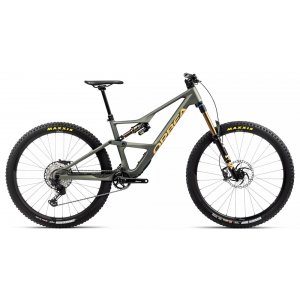
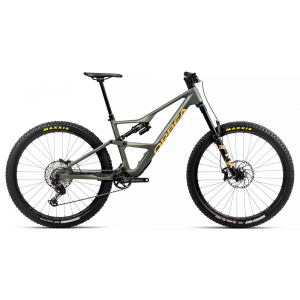


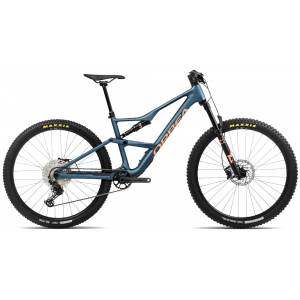
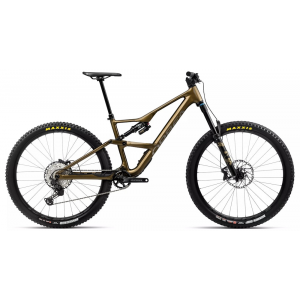

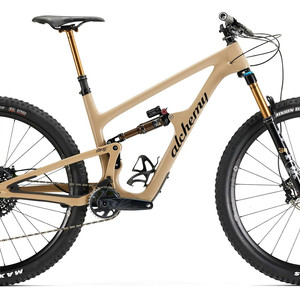

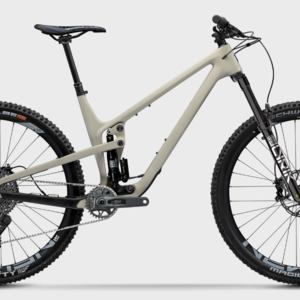
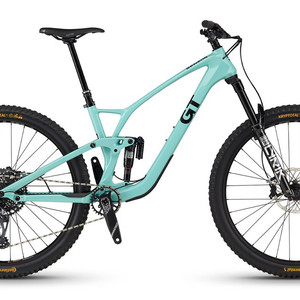

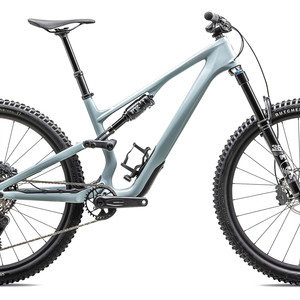
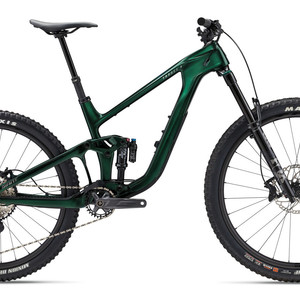
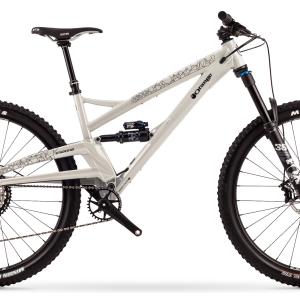










14 comments
Post a reply to: The XCer's Trail Bike? Orbea Occam Review